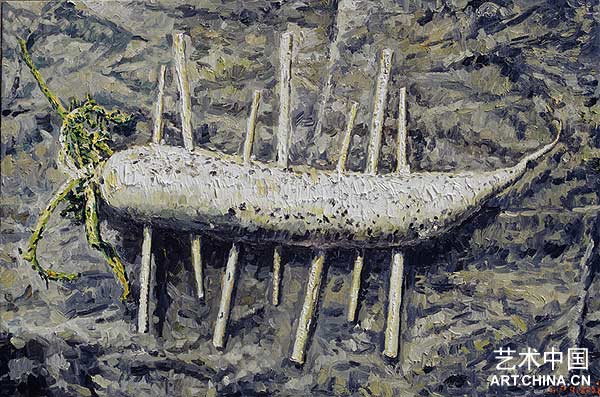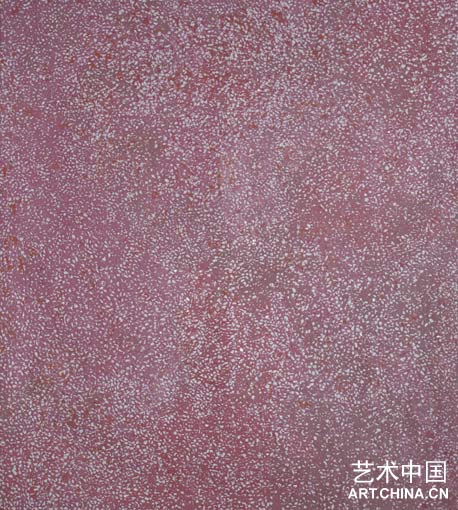
秦琦1
蘿卜 布面油彩
Turnip Oil on canvas
100×150cm
2007
Notes of Conception:
A Local Narrative of Chinese Contemporary Painting
Opening Date: July 12, 2008, 16:00
Dates: July 12 — August 15, 2008
Address: Iberia Center for Contemporary Art
798 Art District, No.4 Jiuxianqiao Road, Chaoyang District, Beijing,China
Curators: Bao Dong, Sun Dongdong
Artists: Cui Jie, Duan Jianyu, Gong Jian, Hu Liu, Ji Dachun, Li Qing, Li Wei, Liu Bin, Liu Wei, Qin Qi, Wang Guangle, Wang Luyan, Wang Yaqiang, Wang Yabing, Wang Yin, Yin Qi
Presented by: Iberia Center for Contemporary Art
Director: Xia Jifeng
www.iberiart.org
Notes of Conception: A Local Narrative of Chinese Contemporary Painting
Newsletter
“Notes of Conception: A Local Narrative of Chinese Contemporary Painting”, the second exhibition presented by Iberia Center for Contemporary Art will open on July 12th, 2008 and close on August 15th, 2008. It is also the first exhibition conceived by young curators of the Center. They have challenged the prevailing interpretation modes of painting and proposed a new direction with their selection of artists and paintings for the present exhibition.
The artists invited to the exhibition are Cui Jie, Duan Jianyu, Gong Jian, Hu Liu, Ji Dachun, Li Qing, Li Wei, Liu Bin, Liu Wei, Qin Qi, Wang Guangle, Wang Luyan, Wang Yabin, Wang Yaqiang, Wang Yin and Yin Qi. This is a list showing great span in age, diversity in art theme and unevenness in popularity. However, all of them have kept their reflective awareness and maintained their experimental energies, trying to position painting in a professional and problem-based context. They work on the conceptual platform of “painting” with respective approaches while reserving skepticism to the existing discourse of painting as they constantly look into expanding the possibility of painting.
Note is a genre of writing from ancient Chinese tradition of literature and history. The curators draw an analogy between the artists’ painting practice and note-writing not only to introduce the outward common features, but also to suggest their cultural political role of deconstructing the existing discourse of painting. The theme of the exhibition also contains a cautious attitude, skepticism to homogeneous narration of any kind.
Therefore, this exhibition does not claim to rework our art history, nor does it attempt to inspire a new trend, but rather proposes a new angle and value dimension so as to unleash the potential energies of painting in the context of contemporary art today.
Exhibition Concept
Mainstream discourse on Chinese contemporary painting has evolved around the theory of social reflection with a mask on, from Scar Painting, Rural Painting to Political Pop, New Generation, Cynical Realism, to Gaudy Art, Cartoon Art, and Photographic Painting, which are mostly translations of social subject matters such as memories of the Cultural Revolution, Rural Reality, Red Political Power, urban life, meaningless experiences, Consumer Culture, image culture, etc.—subjects that have been projected into paintings and were then consumed as such. Perhaps there was a social motivation behind each trend at the beginning, but it was eventually overrun by those few stereotypical symbols.
Another related discourse is the reversed historical determinism. People often superficially appropriate “time” in order to produce some seemingly new art trends one after another, and their most typical narrative mode has been the “xx generation” or the “new xx”. According to their discussions, the most important value in art seems to be manifestations concurrent to the present era, and discourses as such have created opportunities for the determinism of subject matter. Being unconsciously ensnared by vulgar sociology, artists have been voluntarily pursuing the latest trend. This is not necessarily the overall reality of Chinese contemporary painting, but there is no question that it is a phenomenon of the mainstream.
Yet, for the same reason, we cannot neglect those artists who kept their reflective awareness and maintained their experimental energies. Painting becomes a discourse for them, a work site where they carry on reflexive thinking and experimentation and it is no longer a socio-psychological tool of representation. Under this premise, painting is positioned in a professional and problem-based context and then the artists—now more than painters—work on the conceptual platform of “painting” with respective approaches within this particular context while reserving a skepticism to the existing discourse of painting as they constantly look into expanding the possibility of painting.
To work consciously with concepts ultimately makes one proactive in one’s approach of rhetoric. In another word, when painting becomes a problem, everything about painting will not be taken for granted. Many factors, including material, size, painting strokes, visuality, icon, image, narrative, taste, style, etc, should be examined under a new light in their new identities as rhetorical means. This activates rhetorical consciousness on the artists’ part. From the thickness of paint, canvas size, selection of icons, to the remaking of images, all fall into rhetorical categories to be commanded by the artists’ consciousness.
In the eyes of the artists, even painting itself has become rhetoric, a way to construct meaning and pleasure. In this sense, their work is writerly, that is to say, viewing is no longer the simple process of receiving meanings, but an act of actively producing meaning and pleasure.
Since we have already understood their painting as writing in a broad sense, we can also go little further—which type of writing does their “painting texts” belong to?
Our opinion is that these texts of painting, scattered yet well documented, evasive yet opposite, satirical and playful yet poignantly observant, independently comprehensive yet encompassing, are no doubt the extension of the writing genre of notes in the realm of painting and modern society. In ancient Chinese tradition, note is a typical writing genre that crosses the border of literary and historical texts and blends narration and argumentation. It can be literary sketches and miscellaneous anecdotes, or, research and discriminations. Moreover, it contains spirits of skepticism to and subversion of mainstream discourse. Thus, to draw an analogy between note writing and the artists’ painting practice is not only to introduce the outward common features, but also to suggest their cultural political role—their painting practice acts as a force to deconstruct the existing discourse of painting, hence, helps the reduction of painting from various “l(fā)egends” of itself.
But we do not mean to signify the existence of “an origin of painting”, neither do we claim to rework our art history or attempt to inspire a new trend. In fact, any homogeneous narration on the complex and unstable art practice would be invalid, and the curatorial perspective we have taken is only a local narrative among many. The participating artists and their paintings can also be interpreted from other trains of thought. However, we would like to emphasize that the existing mainstream narrative mode—socio-psychological representation, or aesthetic and formal autonomy—cannot effectively reveal their value.
Therefore, we do not need to hold back on the critical focus of this exhibition. However, before we are able to come to any conclusion, we can only attempt to show the outcome of a series of artistic experiments, or propose a new angle and value dimension so as to unleash the potential energies of painting in the context of contemporary art today.

王光樂(lè)1
水磨石 布面油彩
Terrazzo Oil on canvas
180×160cm
2008
|

